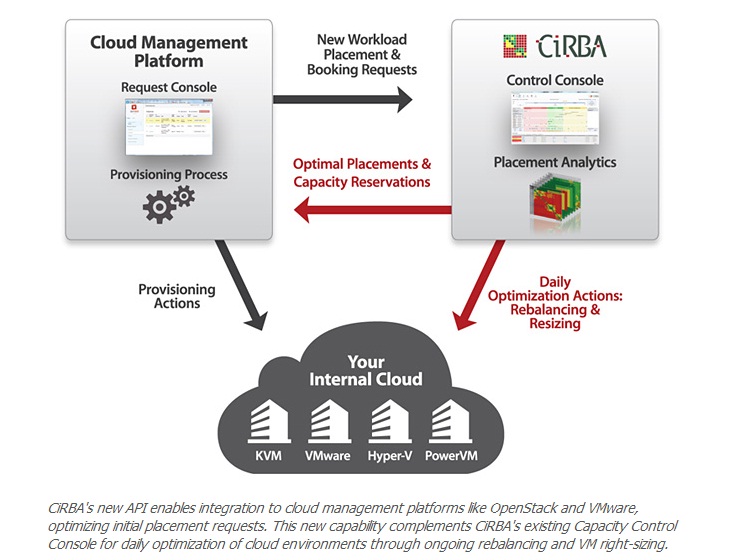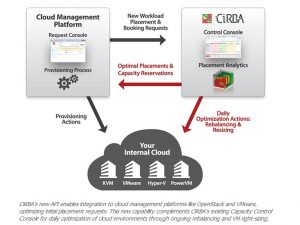
CiRBA’s New API Adds VM Placement Brain to Cloud Management Platforms such as OpenStack
Cloud management platforms are integrated products that provide for the management of public, private and hybrid cloud environments. CiRBA, a leading provider of capacity transformation and control software, recently announced its new capabilities for organizations looking to address the problems with building an internal cloud on platforms like OpenStack.
In 2012, officials announced that since its launching, the project expanded from 30,000 lines of code to more than 600,000. So 2013 is going to be an important year for the company. OpenStack advocates hope that 2013 will be the year of adoption. And with the new API Adds VM Placement Brain to Cloud Management Platforms from CiRBA, this could be a big deal.
CiRBA’s new API can determine the optimal placement for VMs within the cloud infrastructure and will drive up VM density by 48%. This significantly reduces processor-based-licensing costs, which is critical for companies that fall victim to high infrastructure costs and budget cuts.

There are many companies building internal clouds relying on cloud management platforms, but face a challenge in bringing together all of the required capabilities. Although cloud management platforms are designed to provision VMs, they don’t have the ability to analyze capacity in order to determine the best environment to host a workload in or the best host within an environment to start an instance on. As a result, hot-spots and imbalances in resource utilization will occur in the infrastructure, creating both performance issues and inefficient use of capacity.
CiRBA’s new workload routing API enables cloud management platforms to send placement requests to CiRBA, and to receive an answer back that contains the best possible environment and host-level placement for a new workload. This answer is based on CiRBA’s industry leading analytics, which consider a broad set of factors including utilization patterns, licensing requirements, capacity availability, policy constraints and technical considerations.
This brings a new level of automation, enabling cloud management platforms to dynamically leverage CiRBA’s analytics in order to intelligently process workload placement requests, which is often one of the biggest gaps in internal cloud implementations. Integrating CiRBA into this process ensures high efficiency while reducing operational risks, allowing more instances to fit into each environment while at the same time making existing instances work better. This new capability complements CiRBA’s standard control capabilities, which continuously “auto-corrects” cloud infrastructure through ongoing rebalancing and instance right-sizing.
The new API also enables capacity reservations to be made for new VMs through CiRBA’s Bookings Management System. This ensures the capacity is held for that workload when it is ready to be deployed if it is not required immediately.





